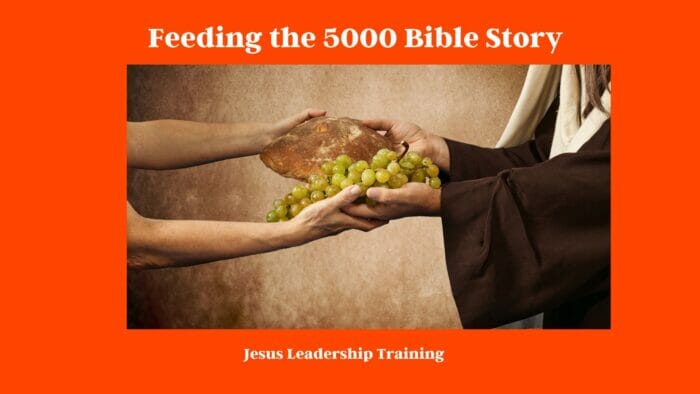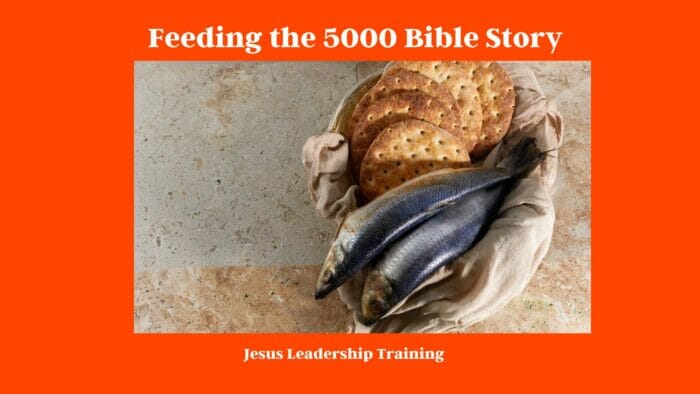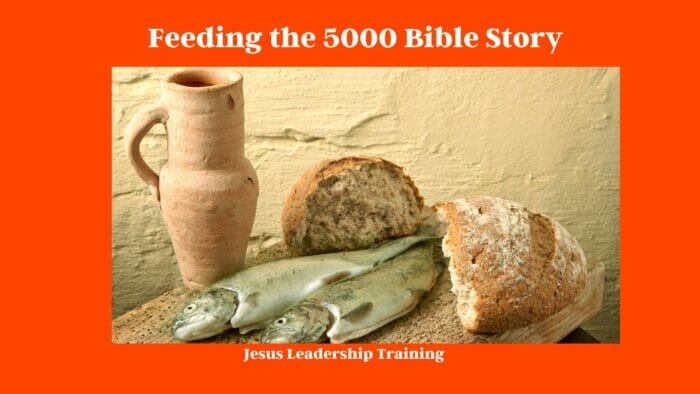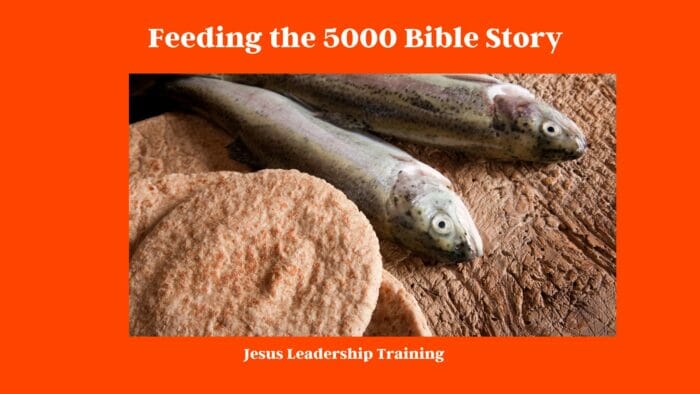In the realm of biblical tales, the Feeding the 5000 Bible Story stands out as a testament to the profound compassion and miraculous power of Jesus Christ. This awe-inspiring account, found in the New Testament, specifically in the books of Matthew, Mark, Luke, and John, recounts an extraordinary event where Jesus feeds a multitude of people with just five loaves of bread and two fish. Let’s delve into the details of this remarkable story, exploring its significance, lessons, and enduring message of divine providence.
Table of Contents
Feeding the 5000 Bible Story: An Abundance from Meager Beginnings
The Feeding the 5000 Bible Story unfolds with a large crowd following Jesus, captivated by his teachings and the miracles he performed. As the day progressed, Jesus’ disciples grew concerned about the people’s hunger, realizing they were in a remote location with limited resources. They approached Jesus, urging him to send the crowd away to find food for themselves.
Jesus’ Response: An Expression of Abundant Grace and Compassion
Jesus, in his unwavering compassion, responded to his disciples’ concerns with a remarkable directive. He instructed them to gather whatever food they could find among the crowd. Astonished, the disciples discovered a young boy who had five loaves of bread and two fish. It seemed inconceivable that such a meager offering could satisfy the vast number of hungry souls.
The Miracle Unfolds: Multiplication of Bread and Fish
Undeterred by the apparent scarcity, Jesus took the loaves and fish, looked up to heaven, blessed them, and began breaking the bread. Awe-inspiringly, the small portion of food multiplied in Jesus’ hands, allowing the disciples to distribute an abundance of sustenance to the multitude. Astonished and filled with gratitude, everyone present enjoyed their fill, with twelve baskets of leftovers collected afterward.

Lessons from the Feeding the 5000 Bible Story
The Feeding the 5000 Bible Story carries significant lessons and messages that resonate through the ages. Here are some key takeaways from this profound account:
1. Faith in God’s Provision
The story underscores the importance of placing our faith in God’s provision, even in the face of apparent scarcity. Just as Jesus transformed a modest offering into abundance, we are reminded to trust in divine providence, knowing that God can work miracles in our lives.
2. Compassion and Generosity
Jesus’ compassion and generosity are at the core of this story. He not only performed a miraculous act to satisfy physical hunger but also demonstrated the importance of caring for one another. The tale encourages us to cultivate a spirit of compassion and generosity, reaching out to those in need.

3. The Power of Small Beginnings
The story highlights the potential within seemingly insignificant beginnings. The young boy’s offering of five loaves and two fish appeared trivial, yet it became the catalyst for a monumental miracle. This encourages us to embrace the power of our own small actions, knowing that they can lead to profound impacts.
4. Trusting in God’s Miracles
Through this story, we learn that miracles are not confined to the past. Just as Jesus fed the multitude, we are encouraged to trust in God’s miraculous power in our lives. It reminds us that, with unwavering faith, anything is possible.

5. Stewardship and Gratitude
The account emphasizes the importance of stewardship and gratitude. The disciples were entrusted with the task of distributing the multiplied food, showcasing the significance of responsibly managing and sharing God’s blessings. Moreover, the collection
of twelve baskets of leftovers serves as a powerful reminder to express gratitude for the abundance we receive.
6. The Unity of Believers
Another vital lesson found within the Feeding the 5000 Bible Story is the unity of believers. As the crowd gathered to witness the miracle, people from various backgrounds and walks of life came together, united by their faith in Jesus. This story serves as a reminder that, despite our differences, we can find common ground and experience a sense of unity through our shared belief in Christ.

FAQs about the Feeding the 5000 Bible Story
Let’s address some frequently asked questions about the Feeding the 5000 Bible Story:
1. Why is the Feeding the 5000 Bible Story significant?
The Feeding the 5000 Bible Story holds great significance as it showcases Jesus’ compassion, power, and provision. It serves as a testament to his divine nature and emphasizes the importance of faith, generosity, and gratitude.
2. What is the symbolic meaning behind the multiplication of food?
The multiplication of food symbolizes God’s ability to transform scarcity into abundance. It represents the spiritual nourishment that Jesus provides and his ability to satisfy the deepest hunger of our souls.
3. How does the story of feeding the 5000 demonstrate Jesus’ role as the Messiah?
By performing this miraculous act, Jesus displayed his divine authority and power. The story affirms his identity as the long-awaited Messiah who came to fulfill God’s promises and provide for his people.
4. Are there any other instances of Jesus performing similar miracles?
Yes, there are other accounts in the Bible where Jesus performs miracles involving food. For instance, the story of the feeding of the 4,000, recorded in Matthew 15:32-39 and Mark 8:1-10, bears similarities to the Feeding the 5000 Bible Story, showcasing Jesus’ compassion and miraculous provision.
5. What are the key lessons we can learn from the story?
The story teaches us lessons of faith, compassion, generosity, gratitude, stewardship, and trust in God’s miracles. It encourages us to rely on God’s provision, care for others, appreciate the power of small beginnings, and seek unity among believers.
6. How can we apply the teachings from the story to our lives today?
We can apply the teachings by developing a deeper faith in God’s provision, cultivating compassion and generosity toward others, being good stewards of our blessings, expressing gratitude for the abundance in our lives, and trusting in God’s miraculous power to transform challenging situations.
This article embarks on a journey to explore the rich background of a popular Biblical event: Jesus feeding the 5000. This miracle, deeply rooted in the Christian tradition, serves as a beacon of hope and symbol of abundance.
The Historical Context
The Roman Empire
Understanding the backdrop of the Roman Empire is crucial in grasping the setting of this event. During the time of Jesus, the Roman Empire ruled over the Mediterranean region, including Judea, where Jesus lived. The oppressive regime had set the stage for a sense of hopelessness and despair among the populace.
Jewish Religious Practices
During this era, the Jewish religion was at its height. Regular sacrifices, synagogues, and strict adherence to Mosaic Law characterized the Jewish way of life. Amid this backdrop, Jesus’ ministry and miracles stood out, offering an alternative to the Jewish religious establishment.
The Biblical Account
The Gospel According to Matthew
The miracle of feeding the 5000 is recorded in Matthew 14:13-21. Jesus, moved by compassion, multiplied five loaves of bread and two fish to feed a multitude of 5000 men, excluding women and children.
The Gospel According to Mark
Mark’s account (6:30-44) parallels Matthew’s, noting that Jesus taught the crowd before performing the miracle. This highlights the dual spiritual and physical nourishment provided by Jesus.
The Gospel According to Luke
In Luke 9:10-17, the emphasis is on the disciples’ role in distributing the food. This could be interpreted as Jesus empowering his followers to perform miraculous works.
The Gospel According to John
John 6:1-15 provides a slightly different perspective, adding that the miracle led the crowd to perceive Jesus as ‘the Prophet’ who was to come into the world.
Theological Interpretations
Symbolism of Bread
Bread, in biblical symbolism, often represents sustenance and life. Jesus, through this miracle, is presented as the ‘Bread of Life’ – the ultimate source of spiritual sustenance.
Jesus as a Provider
The miracle also portrays Jesus as a provider, emphasizing his compassion and care for humanity’s physical and spiritual needs.
Impact on Christianity
Eucharistic References
Many see this event as a prefiguration of the Eucharist – the Christian practice of consuming bread and wine in remembrance of Jesus’ sacrifice. The act of Jesus breaking the bread has been etched in Christian liturgy.
Faith and Miracles
The miracle symbolizes the abundance of God’s grace, illustrating that faith can lead to miraculous outcomes. This narrative has deeply influenced Christian attitudes towards faith and divine providence.
The background of Jesus feeding the 5000 is multifaceted, woven into the tapestry of historical, cultural, and religious contexts. It’s a powerful testament to Jesus’ role as a spiritual leader and provider, still resonating with believers today.
Conclusion: A Testament of Divine Compassion and Abundance
The Feeding the 5000 Bible Story stands as a remarkable testament to Jesus’ divine compassion, abundance, and power. It captures a moment in history where a multitude was fed with meager resources, leaving behind a lasting message of faith, unity, and the miraculous nature of God’s provision. As we reflect on this extraordinary account, may we embrace its profound lessons, seeking to live with compassion, generosity, and unwavering trust in God’s abundant grace.




